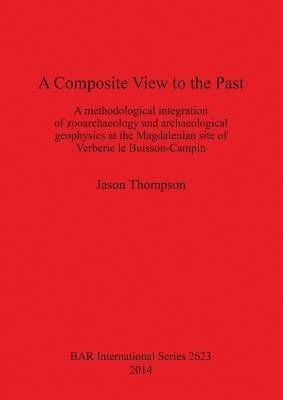
- We will send in 10–14 business days.
- Author: Jason Thompson
- Publisher: British Archaeological Reports Oxford Ltd
- ISBN-10: 1407312588
- ISBN-13: 9781407312583
- Format: 21 x 29.7 x 0.8 cm, minkšti viršeliai
- Language: English
- SAVE -10% with code: EXTRA
Reviews
Description
Debates of alleged human modernity and archaism have dominated much of the recent Eurasian Paleolithic archaeological literature. Most debate has tended to proceed through the position and relative disposition of various interesting theoretical questions, such as "When did Modernity arrive in Europe?", or "Which Pleistocene human chronospecies brought Modernity to Europe?", or even, "Were Neanderthals modern?" Some even ask, "Were Neanderthals human?" The evidence on which such debates have occurred have tended to consist of data derived from artifact seriations and various attribute analyses of lithic technology, and, especially since the late 1980s and 1990s, upon mitochondrial DNA and other (unfortunately non-comprehensive) genetic studies. Some of the issues arising from these debates provide the focus for this present study.
EXTRA 10 % discount with code: EXTRA
The promotion ends in 23d.06:21:44
The discount code is valid when purchasing from 10 €. Discounts do not stack.
- Author: Jason Thompson
- Publisher: British Archaeological Reports Oxford Ltd
- ISBN-10: 1407312588
- ISBN-13: 9781407312583
- Format: 21 x 29.7 x 0.8 cm, minkšti viršeliai
- Language: English English
Debates of alleged human modernity and archaism have dominated much of the recent Eurasian Paleolithic archaeological literature. Most debate has tended to proceed through the position and relative disposition of various interesting theoretical questions, such as "When did Modernity arrive in Europe?", or "Which Pleistocene human chronospecies brought Modernity to Europe?", or even, "Were Neanderthals modern?" Some even ask, "Were Neanderthals human?" The evidence on which such debates have occurred have tended to consist of data derived from artifact seriations and various attribute analyses of lithic technology, and, especially since the late 1980s and 1990s, upon mitochondrial DNA and other (unfortunately non-comprehensive) genetic studies. Some of the issues arising from these debates provide the focus for this present study.


Reviews